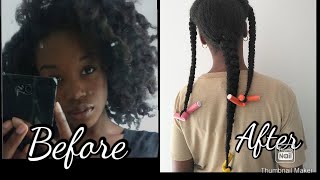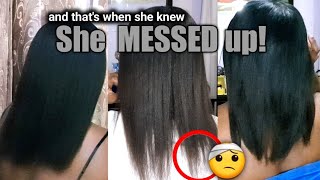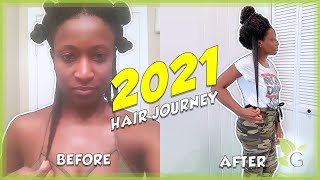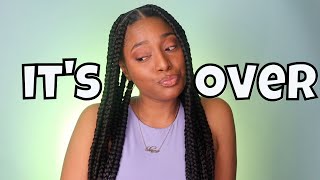10 Ingredients You Should Look For In Your Conditioner
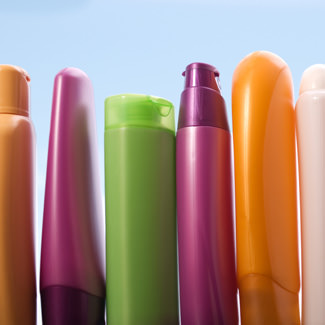 I remember how happy I was to see that there was going to be a new natural hair company launched in Jamaica with all the cool new products I have loved here in the US for the last four years of my hair journey.
I remember how happy I was to see that there was going to be a new natural hair company launched in Jamaica with all the cool new products I have loved here in the US for the last four years of my hair journey.
Nettle and Moss, is a pretty young business but it carries enough of the popular brands so I could tell my friends and family in Kingston to go there if I wanted them to try a new conditioner I was currently loving .
It takes time, research and expert logistics for product lines to move across territories and regions so at times a woman on the same hair journey as myself who lives across the globe may not always have the luxury of just running to the nearest Target to pick up a jar of conditioner.
With that said there are other ways of enjoying the benefit of a great product without worrying too much about particular brands with fancy bottles and creamy concoctions that smell like cake.
Sometimes we have to strip a product down to its bare ingredients and if we shop by ingredients chances are if the product is considered an ‘off brand’ it will work just as well as something that is ‘on brand’.
How To Know What To Look For In Your Conditioners
Start out with the basics of what your hair needs and likes. Moisture is always going to be on the list, protein is a great candidate and cannot be left off, and if you are into emollients, ingredients like shea butter* are great and don’t forget about your favorite oils* such as olive oil* or coconut oil*.
Once you have your lists of needs and likes then the next task is becoming familiar with how certain ingredients work especially when they are listed under scientific names that we do not use in everyday conversation.
Let’s build an ingredient list to demonstrate just what we mean.
Proteins
1. Keratin (Hydrolyzed Keratin)
Protein is the back bone of the hair strand so if you are looking for a product to repair damage or to strengthen the hair, keratin is a great ingredient to see somewhere in the list of ingredients. Hydrolyzed protein simply means that the protein has been broken down into tiny particles that are able to better penetrate the hair strand strengthening it from the inside out.
2. Wheat Protein (Hydrolyzed Wheat Protein)
Works similarly to keratin however the main difference is that it is rich in fatty acids and can make the hair shiner and easier to manage. Hydrolyzed wheat protein is typically found in deep conditioners and can be considered a protein treatment when used on your hair.
If you are slightly protein sensitive, follow up your protein treatment with great moisture treatment so that you get the benefit of the protein without the downsides of protein overload which can cause stiff strands that break easily.
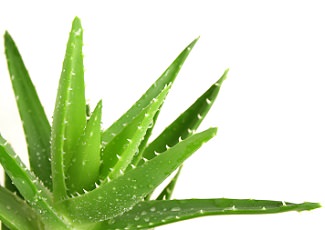 Moisturizers and Strengtheners
Moisturizers and Strengtheners
3. Panthenol
Great for moisture because it binds moisture to the hair preventing dryness. This ingredient is a humectant, a detangler, emollient and a glossifier. It is water soluble and can be easily washed out despite rumors that accuse it of leaving a waxy film on the hair strand.
For some people panthenol in products is hit or miss, because even though it leads to great moisture retention it can also lead to frizz or poofiness in hot and humid weather.
4. Ceramides
Ceramides are lipids that fill the gaps in the outer portion of the hair cuticle. They work kind of like glue for the scales of the hair cuticle; they keep the scales flat leading to a healthier appearance and better moisture retention.
For relaxed hair, ceramides are especially important because the cuticles are lifted when a relaxer is applied and ceramides will help to fill in the gaps that are naturally created from the chemical. Ceramides help with reducing friction and damage caused from manipulation and general wear and tear.
5. Glycerol (Glycerin)
Some women like glycerin others do not and some like it depending on whether it happens to be summer or winter, either way it may be used as a way to moisturize dry hair and add slip to your conditioning product.
This ingredient is a matter of preference, if your hair likes glycerin make sure it is high on your list of ingredients so that you can get the maximum benefit of it.
6. Aloe Vera (Aloe barbadensis)
This healing plant extract has so many health benefits it that it has it’s own separate post here. Aloe Vera is rich in vitamins*, soothing to the scalp and it’s also very moisturizing. In fact it is extensively used in the cosmetics industry for these properties.
7. Cetyl Alcohol
Yes, not all alcohols are drying, cetyl alcohol is a fatty alcohol that is derived from coconut oil* and palm oil and is responsible for making hair soft. It is a great emollient and can be found if many commercial conditioners.
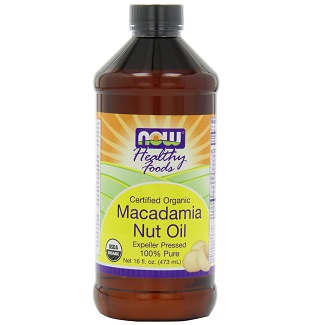 Oils*
Oils*
8. Macadamia Oil (Macadamia Ternifoli)
Macadamia oil is a very rich oil that contains natural lipids that are great for reducing dryness and helping with damaged hair. This ingredient can easily be placed in the moisture category because it helps to soften the hair making it feel moisturized and healthy.
9. Sweet Almond Oil* (Prunus Amygdalus Dulcis)
If you have fine strands and you are looking for a product that does not weigh your hair down then sweet almond oil* is the ingredient for you. It helps to moisturize hair without leaving a greasy residue behind. Perfect for those of us with fine or low porosity hair.
10. Olive Oil* (Olea europea)
The scientific name is so sexy, but we are all very familiar with olive oil* and the great benefits it has when it is added to our hair as a single ingredient or among many ingredients.
It is hands down one of the best oils* for your hair so if you see this oil in your conditioner’s ingredient list and your hair likes it, the product might be the one for you.
Other Additives
Silicones (e.g. Dimethicone)
Silicones get a very bad rap in the hair community because they are known to cause buildup that can only be removed using a sulfate shampoo. However there are some ‘cones’ that are water soluble or some for which buildup is less frequent.
The purpose of cones are to add slip to a conditioner helping you to detangle your hair easily; it also gives your hair a lustrous look that might be more difficult to bring out if you don’t have naturally shiny hair.
The use of cones is a personal choice, some women love them some don’t. The point is they are easily identifiable on the label because usually the ingredient ends in ‘cone’.
Conclusion
There are a ton of other ingredients we could add to this list however we would probably bore you to death. The point behind this exercise is not to burden you with knowledge about every single thing that goes into making a conditioner but to give you a general idea of what you are putting on your hair and how it works to your benefit.
That way you will not driven so much by brands but by the stuff that goes into making the products you love so much.

